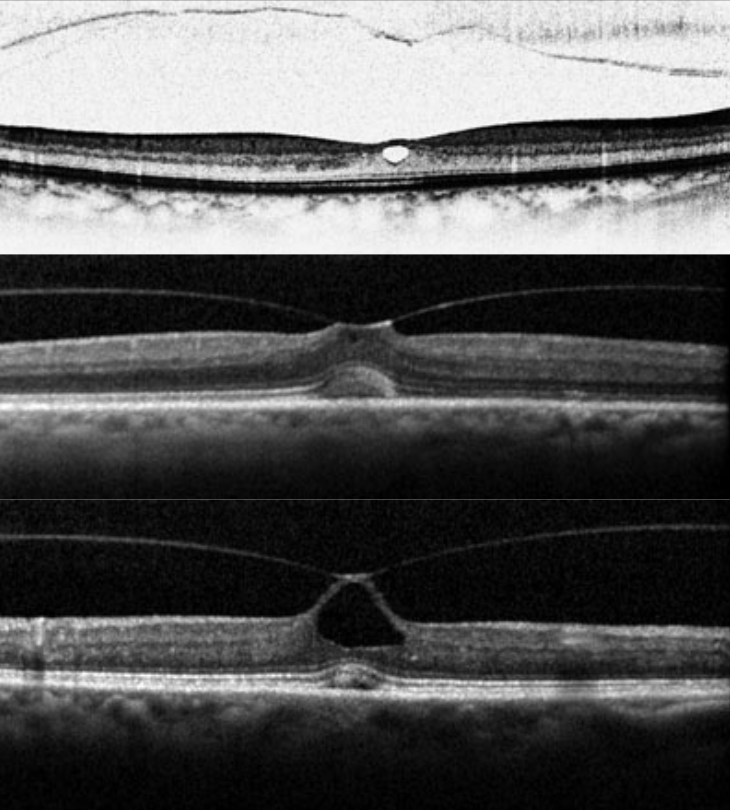 |
|
In the first few months of anti-VEGF treatment, nAMD patients should be monitored for the possibility of vitreomacular interface changes. Photo: Marlon Demeritt, OD, and Diana Shechtman, OD. Click image to enlarge. |
Periodic intravitreal injection with anti-VEGF drugs has long been the first-line treatment for neovascular age-related macular degeneration (nAMD). As the prevalence of the disease increases and more patients receive this therapy, it’s critical that we continue to research and expand our understanding of the potential effects and complications anti-VEGF can cause in various parts of the eye.
One recent study specifically looked at the relationship between the treatment and vitreomacular interface changes. What the authors found is that repeated anti-VEGF injections appeared to have a certain probability to cause changes in this ocular region, with an even higher risk in eyes with pre-existing vitreomacular interface abnormality. However, the study authors explained in their paper, “The effect of intravitreal injections on the vitreomacular interface was concentrated in the first three injections, and subsequent increases in the number of injections did not significantly increase the risk of vitreomacular interface abnormality.”
The following were evaluated monthly for at least three months in 87 eyes receiving anti-VEGF therapy for nAMD: vitreomacular interface, BCVA and central retinal thickness. Nature and time of change events were recorded to help determine the risk factors of vitreomacular interface changes and their effect on treatment efficacy.
Vitreomacular interface changes were observed in nine eyes from the cohort during the study period. Sixty percent of these changes occurred within the first three months of treatment, the team reported. The most significant risk factor for vitreomacular interface change was a pre-existing abnormality (OR: 16.52).
The researchers also noted some changes between the central retinal thickness of anti-VEGF-treated patients with changed vs. unchanged vitreomacular interfaces. “The final BCVA of eyes with vitreomacular interface unchanged was significantly higher than that at baseline, and the final central retinal thickness was also significantly lower than that at baseline,” they wrote. For eyes with vitreomacular interface changes, they reported that the central retinal thickness was significantly lower than that at baseline. However, no statistical significance was detected in BCVA.
The researchers concluded that anti-VEGF injections are only likely to cause changes in the vitreomacular interface within the first three treatments. Therefore, they advise optometrists and ophthalmologists to “increase attention to the vitreomacular interface in the early stages of anti-VEGF therapy and counsel patients accordingly.”
Han F, Chen X, Zhao R. et al. The effect of vitreomacular interface in neovascular age-related macular degeneration treated with intravitreal injection of anti-VEGF. BMC Ophthalmol. November 3, 2022. [Epub ahead of print]. |


